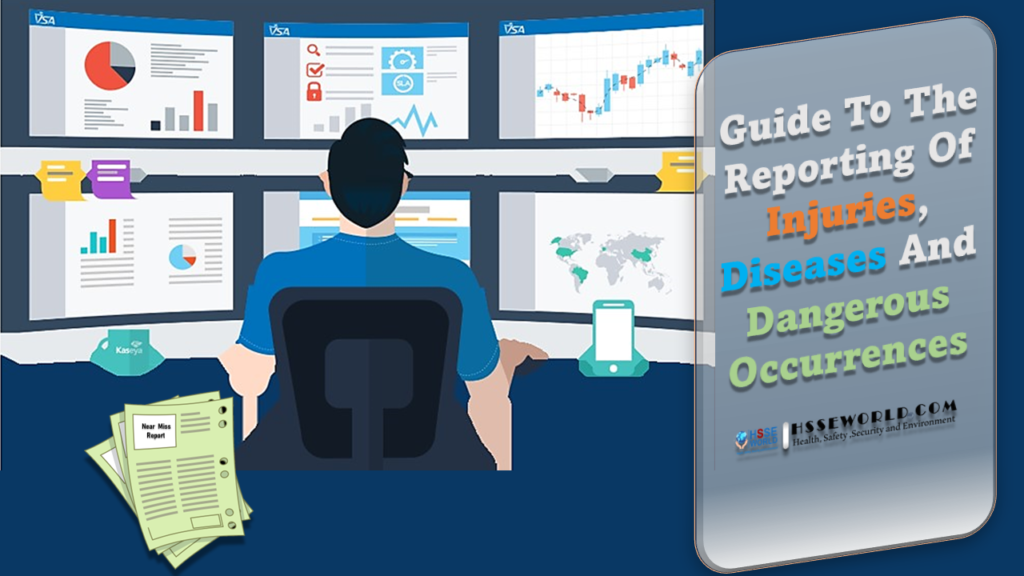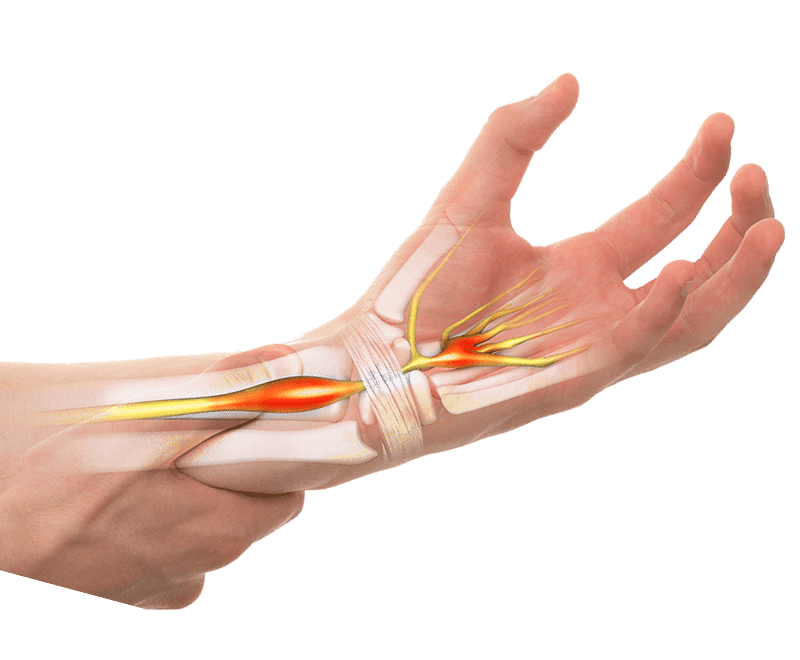Guide To The Reporting Of Injuries, Diseases And Dangerous Occurrences
11 min readRIDDOR is a set of regulations in the United Kingdom that require employers, the self-employed, and people in control of work premises to report certain work-related incidents and illnesses to the relevant authorities. The regulations apply to a wide range of industries and workplaces, including offices, factories, construction sites, and farms. Employers, self-employed individuals, and people in charge of work locations are all subject to the Reporting of Injuries, Diseases, and Dangerous Occurrences (RIDDOR) legal requirement. The reporting of work-related accidents that result in fatalities, specific injuries, over-seven-day injuries, occupational diseases, and potentially dangerous situations is mandated by RIDDOR. In this article, you will find a general guide to reporting incidents under RIDDOR.
Also Read: Musculoskeletal Disorders (MSDs) in the Prep Kitchen


What incidents should be reported?
All work-related incidents that result in the following should be reported under RIDDOR:
- Death
- Specified injuries: including fractures, amputations, loss of sight, serious burns, crush injuries, scalping, and penetrating injuries to the head, torso, or abdomen
- Over-7-day injuries: when an employee or self-employed person is away from work or unable to perform their normal work duties for more than seven consecutive days as a result of the injury
- Work-related diseases: including those that are reportable under the Health and Safety (Control of Substances Hazardous to Health) Regulations 2002 (COSHH) or the Reporting of Injuries, Diseases, and Dangerous Occurrences Regulations 2013 (RIDDOR)
- Dangerous occurrences: include incidents such as the collapse of scaffolding, explosions, electrical incidents, and incidents involving confined spaces, lifting equipment, or pressure systems.
It’s important to note that not every incident needs to be reported under RIDDOR. For example, incidents resulting in minor injuries that do not require medical attention do not need to be reported.
what is the type of reported incidents at work?
The type of incidents that are reported under RIDDOR at work can vary depending on the nature of the work being carried out and the hazards associated with it. However, some of the most common types of incidents that are reported include:
- Accidents involving machinery or equipment: This can include incidents such as employees getting caught in machinery, being struck by falling objects, or being electrocuted.
- Slips, trips, and falls: These are common incidents in the workplace and can be caused by wet or slippery floors, uneven surfaces, or poor lighting.
- Work-related illnesses or diseases: This can include illnesses such as respiratory diseases, skin conditions, or cancer that are caused by exposure to hazardous substances in the workplace.
- Manual handling incidents: These can include incidents such as lifting heavy objects incorrectly, resulting in back injuries or strains.
- Road traffic incidents: Employees who drive as part of their work may be involved in road traffic incidents while on duty, which must be reported under RIDDOR if they result in injury or death.
- Violence and assaults: This can include incidents such as physical assaults, threats, or verbal abuse from members of the public or other employees.
It’s important to note that these are just some of the most common types of incidents that are reported under RIDDOR. Any work-related incident that results in death, specified injuries, over-7-day injuries, work-related diseases, or dangerous occurrences must be reported, regardless of the type of incident.
Also Read: How to properly investigate accidents in your workplace 10 Critical Steps
Specified injuries that must be reported under RIDDOR
Under RIDDOR, the reporting of specified injuries is required if they are work-related. These injuries are considered to be particularly serious and are defined as follows:
- Fractures (excluding fingers, thumbs, and toes): This includes any injury that results in a fracture to a bone in the body, except for fractures to the fingers, thumbs, and toes.
- Amputations: This includes any injury that results in the complete severance, or the loss of use, of a body part such as a limb, finger, or toe.
- Loss of sight (either temporary or permanent): This includes any injury that causes partial or total loss of sight in one or both eyes.
- Serious burns (covering more than 10% of the body or damaging the eyes, respiratory system, or other vital organs): This includes any injury that results in burns to a significant portion of the body, or to the eyes, respiratory system, or other vital organs.
- Scalping: This includes any injury that results in the removal of all or part of the scalp from the head.
- Any injury that penetrates the skin, body, or abdomen: This includes injuries such as puncture wounds, cuts, stabbings, or gunshot wounds.
What are the reporting requirements for specified injuries under RIDDOR?
Under RIDDOR, there are specific reporting requirements for specified injuries that occur in the workplace. If an employee suffers a specified injury that is work-related, the employer or person in control of the work premises must report it to the relevant enforcing authority.
The reporting requirements for specified injuries under RIDDOR are as follows:
- The incident must be reported within 10 days of the incident occurring, using the appropriate online form of reporting the incident.
- If the specified injury results in the injured person being unable to work for more than seven consecutive days, the incident must be reported immediately by telephone to the relevant enforcing authority. In this case, a report must also be submitted within 10 days using the appropriate RIDDOR online form.
- The report must include information about the injured person, the nature of the injury, the date and time of the incident, and the location where it occurred.
- The employer or person in control of the work premises must keep a record of the incident in an accident book or other suitable record.
- If the specified injury results in the death of the injured person, the incident must be reported immediately by telephone to the relevant enforcing authority, with a report submitted within 10 days using the appropriate RIDDOR online form.
It’s important to note that failure to report a specified injury that is required to be reported under RIDDOR is a criminal offense and can result in legal action being taken against the employer or person in control of the work premises.
what are the Reportable occupational diseases?
Under the Reporting of Injuries, Diseases, and Dangerous Occurrences Regulations 2013 (RIDDOR), there are a number of occupational diseases that are reportable if they are work-related. The list of reportable occupational diseases includes:


- Carpal tunnel syndrome: This is a condition that affects the nerves in the wrist and hand, causing pain, numbness, and weakness.
- Severe cramp of the hand or forearm: This is a condition that can be caused by repetitive work, causing pain and weakness in the hand and forearm.
- Hand-arm vibration syndrome: This is a condition that can be caused by prolonged use of vibrating tools or machinery, causing pain, numbness, and tingling in the hands and arms.
- Occupational dermatitis: This is a condition that can be caused by exposure to certain chemicals or substances, causing inflammation and irritation of the skin.
- Occupational asthma: This is a condition that can be caused by exposure to certain substances, causing inflammation of the airways and difficulty breathing.
- Lung cancer: This is a type of cancer that can be caused by exposure to certain substances such as asbestos or diesel fumes.
- Silicosis: This is a lung disease that can be caused by exposure to dust containing silica, causing scarring of the lung tissue and breathing difficulties.
It’s important to note that these occupational diseases must be work-related for them to be reportable under RIDDOR. If an employee develops any of these diseases outside of work, they do not need to be reported.
- The disease must be work-related: This means that the disease is caused by the employee’s work activities, or by exposure to substances or processes at work.
- The disease must be one of the specific diseases listed in the RIDDOR regulations: The list of reportable occupational diseases includes the diseases previously mentioned.
- The disease must be confirmed by a medical professional: A medical diagnosis of the disease is required to confirm that the employee has the specific disease and that it is work-related.
If an employer or person in control of the work premises becomes aware that an employee has developed a reportable occupational disease, they must report it to the relevant enforcing authority using the appropriate online form on the HSE website. The report must include information about the employee, the nature of the disease, the date it was diagnosed, and the likely cause of the disease.
What are Reportable dangerous occurrences?
Under the Reporting of Injuries, Diseases, and Dangerous Occurrences Regulations 2013 (RIDDOR), there are specific dangerous occurrences that must be reported if they occur in the workplace. These dangerous occurrences are defined as certain types of incidents that could have caused serious harm but did not actually result in an injury. The list of reportable dangerous occurrences includes:
- The collapse, overturning, or failure of load-bearing parts of lifts and lifting equipment: This includes incidents where a lift, crane, or other lifting equipment has collapsed, overturned, or experienced a failure of its load-bearing parts.
- Explosion, collapse, or bursting of any enclosed vessel, such as a boiler or pressure vessel: This includes incidents where a boiler, pressure vessel, or other enclosed vessel has exploded, collapsed, or burst.
- Electrical short circuit or overload that causes fire or explosion: This includes incidents where an electrical short circuit or overload has caused a fire or explosion.
- Malfunction of any radiation generator or equipment used for radiation therapy: This includes incidents where a radiation generator or equipment used for radiation therapy has malfunctioned.
- Failure of industrial radiography or irradiation equipment to de-energize or return to its safe position after use: This includes incidents where industrial radiography or irradiation equipment has failed to de-energize or return to its safe position after use, potentially exposing employees to dangerous levels of radiation.
- Unintended or uncontrolled release of any substance that could cause harm to health: This includes incidents where a substance that could cause harm to health, such as a toxic chemical or gas, has been released unintentionally or uncontrollably.


It’s important to note that these dangerous occurrences must be work-related for them to be reportable under RIDDOR. If a dangerous occurrence happens outside of work, it does not need to be reported.
Also Read: Close Calls and Near misses incidents
What happens after a report is made?
After a report of a work-related incident is made under RIDDOR, the relevant enforcing authority will review the report and may conduct an investigation into the incident. The enforcing authority may be the Health and Safety (HSE) or the local authority, depending on the industry sector and the location of the incident.
The purpose of the investigation is to determine the cause of the incident and to identify any factors that may have contributed to it. The enforcing authority may conduct interviews with witnesses or employees, examine the scene of the incident, and review relevant documentation such as risk assessments and safety procedures.
Depending on the findings of the investigation, the enforcing authority may take various actions to address any issues identified. These actions may include:
- Providing guidance to the employer or person in control of the work premises on how to prevent similar incidents from occurring in the future.
- Issuing an improvement or prohibition notice, which requires the employer or person in control of the work premises to take specific actions to address any health and safety issues identified.
- Prosecuting the employer or person in control of the work premises if they are found to have breached health and safety laws.
It’s important to note that the enforcing authority may also share the findings of the investigation with other relevant bodies, such as professional organizations or regulatory bodies, to help prevent similar incidents from occurring in the future.
Exemptions
There are some exceptions to the reporting requirements under RIDDOR for certain types of incidents. These exceptions include:
- Road traffic accidents: If a road traffic accident occurs while an employee is traveling to or from work, it is not reportable under RIDDOR. However, if the accident occurs while the employee is driving for work purposes, such as making a delivery, it would be reportable.
- Medical treatment: If an employee receives medical treatment for a minor injury, such as a cut or bruise, that does not require them to take time off work, it does not need to be reported under RIDDOR. However, if the injury is more serious, such as a fracture or loss of consciousness, it would be reportable.
- Violence at work: If an employee is the victim of verbal abuse or a threat of violence at work, it does not need to be reported under RIDDOR. However, if the employee is physically assaulted, it would be reportable.
- Occupational diseases: If an employee develops an occupational disease that is not on the list of reportable diseases, it does not need to be reported under RIDDOR. However, the employer still has a duty to take steps to prevent the disease from occurring or spreading.
It’s important to note that even if an incident is not reportable under RIDDOR, the employer still has a duty to investigate the incident and take steps to prevent similar incidents from occurring in the future.
Recording requirements
Under the Reporting of Injuries, Diseases, and Dangerous Occurrences Regulations 2013 (RIDDOR), employers have a legal duty to keep a record of any reportable incidents that occur in the workplace, even if they are not required to be reported to the relevant enforcing authority.
Employers must keep a record of the following information for each reportable incident:
- The date and time of the incident.
- The location of the incident.
- A brief description of the nature of the incident and the injuries sustained (if any).
- The name and occupation of the person(s) involved in the incident.
- The name and contact details of any witnesses to the incident.
- Any action taken to address any health and safety issues identified as a result of the incident.
The record should be kept in a suitable format, such as a written logbook, an electronic database, or a spreadsheet. The record should be kept for a minimum of three years from the date of the incident.
In addition to keeping a record of reportable incidents, employers should also keep a record of any non-reportable incidents that occur in the workplace. This can help to identify trends or patterns in incidents and can help to prevent similar incidents from occurring in the future.
It’s important to note that the records should be kept confidential and only accessible to those who need to know. The records should be used to identify areas of improvement in the workplace and to implement measures to prevent similar incidents from occurring in the future.
Also, Read Accident incident prevention Techniques
For more safety Resources Please Visit Safetybagresources



